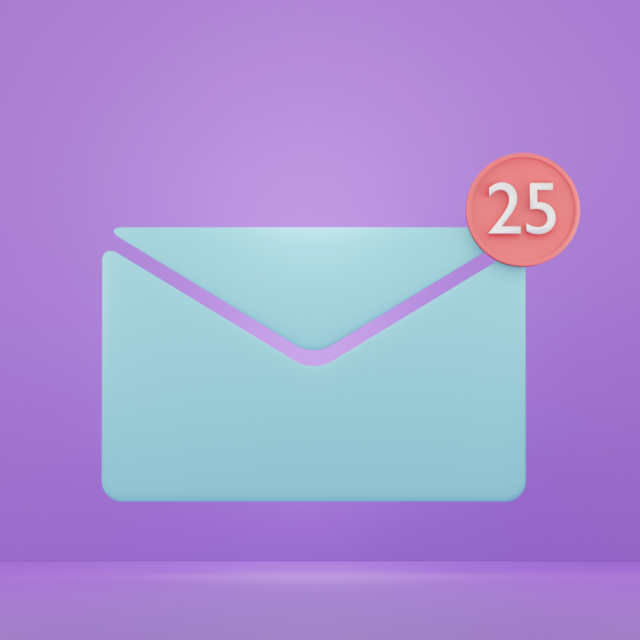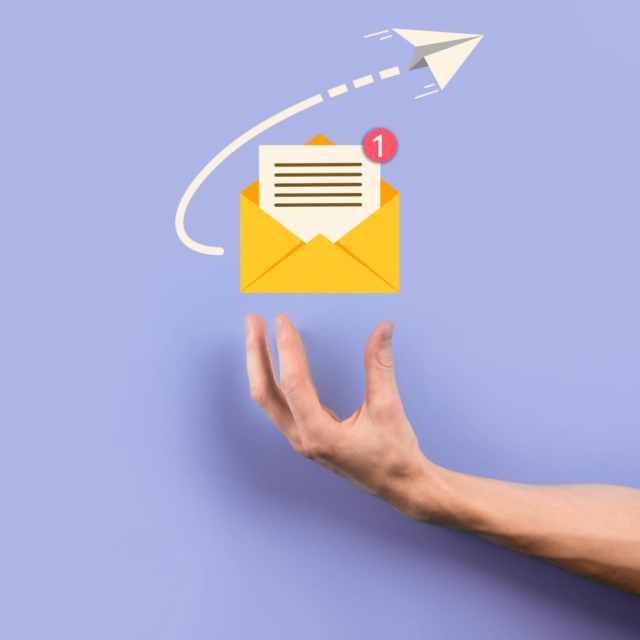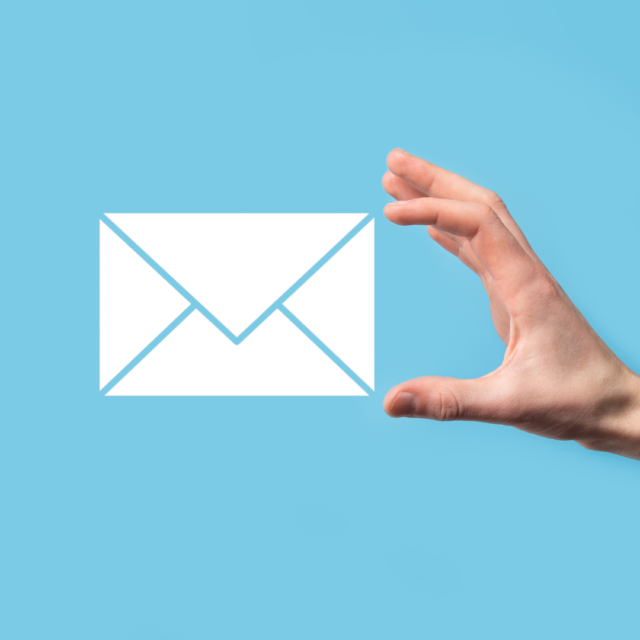Email marketing is one of the most powerful tools you can use to get closer to potential customers.
Email marketing is useful for any business, whether we are talking about a B2B or a B2C.
- What is email marketing?
- Why do you need email marketing?
- Email types
- What is the structure of an email?
- The most used tools for email marketing
- What indicators do we measure to see the performance of an email?
What is email marketing?
Email marketing is a tool that takes your business to the next level, but getting results is not as easy as it seems.
There is a lot of work behind an email because it is not just a text written and sent.
To be successful, your email strategy, you must take into account: the tools you use to send the email, the design used to be attractive and captivating, but also the choice of the best title to increase the conversion rate opening the email.
Effective email marketing takes time, effort, listening, analysis and a strategy.
An email marketing strategy must be based on an editorial plan to create content that brings value.
Why do you need email marketing?
Email marketing is essential for any business because you have a list of subscribers. If Facebook, Twitter or other social media platforms disappear, you will have an ace up your sleeve, a list of subscribers through which you can communicate with your audience.
Email marketing is a quick way to notify your subscribers about the latest offers, discounts and news, in real time, about the products or services that your company offers.
Through email marketing you establish a connection between the brand and the potential customer, reminding him that when he is ready, he can buy.
Did you know that 99% of buyers check their email daily and declare this channel their favorite when it comes to receiving communications from brands (Hubspot).
What types of email are there?
 After you have established the objectives you have for the email marketing campaign, you can also choose the type of email according to them.
After you have established the objectives you have for the email marketing campaign, you can also choose the type of email according to them.
Newsletter – through this type of email, you will be able to create a better relationship with your potential customers.
It’s a way to keep your subscribers’ attention and interest in your business.
Through the newsletter you can notify your subscribers of the latest discounts and news of your business.
But it is important not to forget the 80/20 rule. That is, 80% of the content of the newsletter should be educational and informative, bring value to the subscriber, and only 20% should be promotional.
Informational emails – similar to newsletters, but through which we announce future events, news about events, courses, webinars, etc.
Transactional emails – are those types of automatic emails for actions in which: you confirm an order or participation in an event, confirm subscription to a newsletter, thank a customer for the purchased product, say “welcome”, etc.
This type of email must reach a subscriber’s inbox immediately to be informed in time.
They do not require a sophisticated design and can be simple text.
Notification email – with this type of email you notify subscribers about products that are back in stock, about a new collection of products that have been launched or even the launch of a book, e-book or a new service.
Notification emails are used to pique the interest of subscribers and make them want to buy.
For the design of this type of email, use images of the products, buttons as large as possible with the appropriate CTA (call to action).
What is the structure of an email?
To have a successful email you must keep these tips in mind:
a) Title – how will you inform your subscriber what the email is about;
A good headline is what will increase your email open rate, which is extremely important in your email marketing strategy.
Tips: – choose a title that does not contain more than 7 words;
use the right words to get the subscriber to open your email;
it says what the solution is right from the title
creates desire
offer something of value that will make the subscriber want to learn more
don’t forget the emojis
b) Choose an attractive text preheader – it is the text that appears after the title.
This has the same purpose as the subject line, to get the subscriber to open the email.
Here you can fill in additional title information.
Tips: – use the same tips you received in the title of an email.
c) The company logo – this must appear first in an email, so that the subscriber knows exactly who the email is from.
d) Headline – choose a title that is clear and to the point, that keeps the subscriber interested in the content you offer in the email
e) Banner – that image that appears at the beginning of an email, especially when we talk about the newsletter.
Tips: – choose an eye-catching photo
f) Text content – write content that provokes curiosity.
If we are talking about an email that links to a new article on the site, then we can shorten the most important part of the article in 2-3 sentences and link to the page where the entire article is published.
g) CTA – call to action or the CTA is a button with a call to action.
A CTA should be simple, but accompanied by text that arouses the reader’s curiosity and desire to learn more.
The CTA helps to have as high a CTOR as possible, which is another important KPI of an email.
h) Social Media accounts – don’t forget to add the Social Media accounts at the end of the email.
This way you will allow your subscribers to follow you on social networks and stay up to date with the latest news of your business.
The most used tools to send emails
 a) Mailchimp – one of the most popular tools to send emails.
a) Mailchimp – one of the most popular tools to send emails.
It’s easy to use and comes with a range of ready-made templates where all you have to do is replace text and images.
Mailchimp also has a free version where you can create A/B test campaigns.
b) NewsMAN – is a Romanian e-mail marketing tool, which offers access to a responsive e-mail editor, very easy to use.
c) Zoho Mail – offers much more than simple email management.
This tool allows users to do much more than check their emails.
Zoho Mail includes a calendar, notes, task manager and contact portal. A number of collaboration tools are also available to help your team work more efficiently
What indicators do we look for when we want to see the success of an email?
 Tracking the results of your email campaigns is one of the most effective ways to find out what your audience is responding to and improve your results.
Tracking the results of your email campaigns is one of the most effective ways to find out what your audience is responding to and improve your results.
The most important indicators to watch are:
a) Email opening rate – the percentage of subscribers who opened the email.
This indicator will give you clarity on how good the subject line was and you will know what expectations your subscribers have from the emails you send.
The open rate is calculated as follows:
= (number of subscribers who opened the email / number of emails sent) x 100.
b) Click-through rate (CTR) – represents the percentage of subscribers who clicked on a hyperlink, on a CTA or on an image in the email content.
It is one of the most important indicators that a marketer should track when it comes to email marketing.
CTR is calculated as follows:
CTR = (total number of clicks / number of emails sent – bounce) x 100.
c) Click-to-open rate (CTOR) – is an indicator that measures how effective the e-mail sent is.
Because it’s based on the number of unique opens, CTOR is a good indicator of how interesting your content is to your subscribers.
CTOR = (number of unique clicks / number of unique emails opened) x 100.
d) Bounce rate (Bounce Rate) – the percentage of e-mails that could not be sent or did not reach the recipient.
Bounce rate = (number of emails not sent / total number of emails sent) x 100.
If it seems too complicated and you need help when you want to start an email marketing campaign, a social genie is right here to help you.


